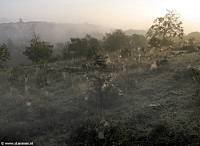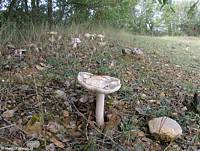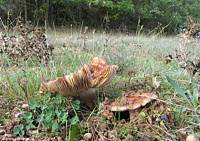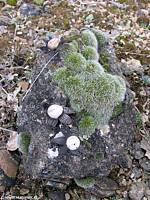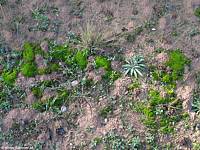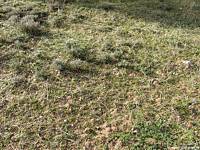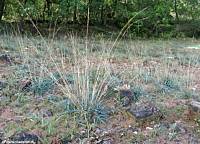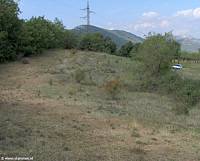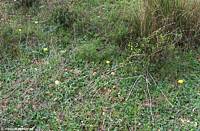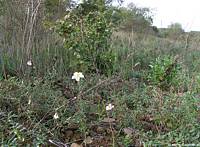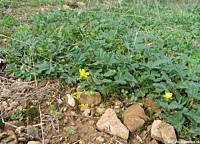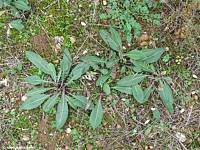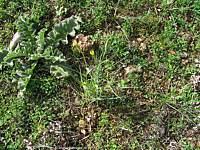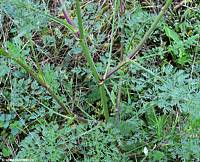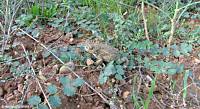|
|
Nature
Switched On
|
|
|
introduction |
2006 October 21 & 22, Saturday & Sunday Nine o'clock Saturday morning. Much fog and humidity but
|
Looking east in the central part
of the terrain.
|
| In the
shadow of some Quercus faginea: Clitocybe nebularis (?).
Of sweet taste and smell but with a doubtful reputation for
edibility 11:05 Astraeus hygrometricus 16:45
|
|
Mushroom G. |
|
Also becoming quite active were the earthworms. The ones we have
seen were all of considerable size and thickness (photographs will
follow) and in some parts of the terrain they had almost literally
ploughed the soil, leaving the typical hillocks of granular soil.
It's clear that this activit
|
The hillocks of the earthworms
colonized by an unknown moss species, together with an
Echium
vulgare recently germinated. |
|
| Poa
bulbosa (here with white stems) also seemed
to prefer the hillocks. Here together with
Thymus vulgaris
and a Medicago
species. 10:51 |
Another grass species in this
area was
Avenula bromoides with a special blue-green colour 10:59 |
|
|
The
western part of the terrain. |
Here an image of the zone in question from 3 weeks ago. The area with less vegetation and a lot of hillocks is on the left. Probably the trees which swallow a lot of humidity, together with the higher altitude, are mainly responsible for the bare and dry character.
|
|
|
Another question is if we have to intervene to
protect the soil or if we must let it go. Candidates for covering
the soil are abundantly present in other parts of the terrain. It
could be an interesting experiment to plant some specimen like:
|
||
|
Hieracium pillosella.
Its best flowering season is spring (as happens with the other
species here presented) 22 Oct 14:05
Potentilla
reptans forms authentic plaques in some
places .
|
Helianthemum violaceum.
Behind it a recently arrived sapling of
Quercus faginea 22 Oct 14:09
Centaurea scabiosa is not exactly a plant that forms carpets but it may protect the soil with its rosettes. 22 Oct 16:19
|
|
|
A plant that colonized many barren and dry areas was an a
|
A species of Medicago orTrifolium
with a rosette of
Verbascum sinuatum
and some specimen (one flowering) of
Tragopogon dubium 21 Oct 11:10
|
|
| Daucus carota has to be esteemed for its enormous attraction for insects... |
Another plant that was becoming
|
...and its almost
architectonic build.
|
|
|
At first we thought that this animal was the culprit
of some very strange bubbling noises that could be heard coming from
different directions at the same time, especially when stepping
firmly on the ground. Later
|
Bufo bufo, the
common toad, traversing some leaves of
Sanguisorba minor |
|
introduction
|
